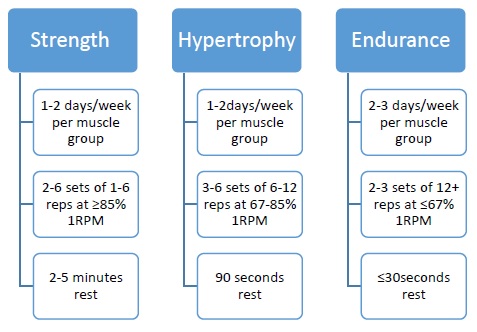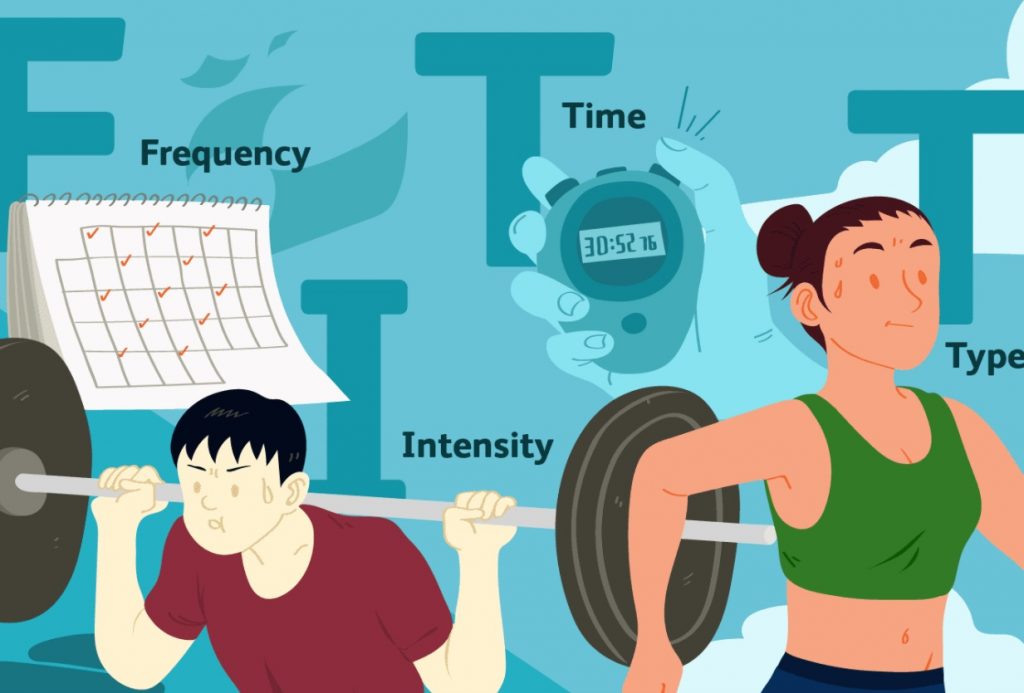What are reps and sets?

Here, I’m going to explain everything you need to know about reps, sets, rep ranges and rest between sets… which will improve your training results.
Reps
Reps (repetitions) refer to the number of times that you perform any given exercise in your workout.
If you complete 10 reps of a press up, that means you’ll repeat the exercise 10 times.
Sets
Sets refer to how many times you will repeat a particular number of repetitions of a given exercise.
For example, let’s say you’re doing bicep curls. Two sets of 15 reps mean you’ll perform 15 bicep curls two times total, resting between each round. In total, you’ll be doing 30 bicep curls.
How much rest you need between sets, depends on the intensity (difficulty, weight, etc) and the number of reps you complete in a given set. Rest between sets is covered in more detail below.
The Different Rep Ranges for Strength, Hypertrophy & Endurance
It is important to plan muscular fitness sessions that are specific to a client’s goal, current fitness level and experience with resistance training.
There are three rep ranges that correspond to the three bio-motor capacities… strength, hypertrophy (muscle building), and endurance:
- Strength training involves lifting heavy loads for low reps. 1-6 rep range is best for gaining strength. Powerlifters usually aim to lift mostly in the 1-3 rep range (e.g. heavy singles, doubles and triples) for their main lifts.
- Hypertrophy training involves lifting moderate loads for moderate reps. 6-12 reps is the optimal rep range for hypertrophy.
- Endurance training involves lifting lighter loads, for high reps. 12+ reps per set, will train muscular endurance.
Now, it is important to understand that these three muscular fitness goals do overlap. Completing heavy sets of 3 reps will focus on building strength, but it also builds some muscle and endurance (to a much lesser extent).
Whilst on the other side of the scale… sets of 20 reps will focus on building endurance, it will also build some muscle and strength (again, to a much lesser extent).
The lesson… You should be utilising all of the different rep ranges to your advantage. Yes, you should focus on one rep range at a time. However, in order to get the long term best results, you need to periodically shift your focus (the basis of periodisation).
How Long Should I Rest Between Sets?

How long you should rest between sets depends on what type of training you’re doing… Here are the basic guidelines for rest between sets:
- Two to five minutes of rest between sets for strength training.
- One to two minutes of rest between sets for hypertrophy training.
- ≤Thirty seconds (to one minute) of rest between sets for endurance training.
Now, it’s important to point out that the above are general recommendations. There may be times where you may need more or less rest, on some exercises and sets. Ultimately, the best method to gauge rest time is to begin a new set as soon as you feel recovered, to the point where you can physically use enough energy to effectively complete the next set.

Frequency, Intensity, Time and Type (FITT Principles)

Finally, we must take into account the FITT principles (Frequency, Intensity, Type and Time), when considering the number of reps and sets in our workouts.
- Frequency refers to how frequent a particular activity is undertaken. This is primarily determined as a balance between ensuring sufficient challenge has been asserted on the body and the rest and recovery required… such that, for example, anaerobic reserves are replenished, metabolic waste is removed and adaptions can occur. A high-frequency routine can have lower reps and fewer sets per workout if it involves mostly high-intensity training, or it can have higher reps and more sets if the intensity is moderate to low. Low-frequency routines are the opposite.
- Intensity (load intensity) defines the amount of effort that should be invested during a session or over the entire training programme. Technically, this refers to the percentage of your one-rep max weight, used on a set for any given exercise. To determine intensity, a balance is required between finding enough intensity to challenge the body sufficiently to illicit adaption but not so much that it causes injury.
- Time refers to how long activities should be carried out for when it comes to your goals and fitness level.
- Type refers to the fact that the type of activities/exercises selected for a training programme, will be based on the goals of the client. For example, aerobic activity might be selected for general improvement in health and wellbeing, whilst anaerobic training might be selected to achieve greater muscular build.
If you want to learn more and take your training to the next level, you may be interested in our CIMSPA accredited health and fitness courses below…
BECOME A PERSONAL TRAINER
EDUCATE FITNESS – HOME OF THE UK’s TOP PERSONAL TRAINERS

Our Accredited Health and Fitness Courses
-
 Level 2 Certificate in Gym Instructing (Face To Face)
Rated 5.00 out of 5
Level 2 Certificate in Gym Instructing (Face To Face)
Rated 5.00 out of 5£999.00Original price was: £999.00.£699.00Current price is: £699.00. -
 Level 3 Certificate in Personal Training (Face To Face)
Rated 5.00 out of 5
Level 3 Certificate in Personal Training (Face To Face)
Rated 5.00 out of 5£1,299.00Original price was: £1,299.00.£899.00Current price is: £899.00. -
 Level 3 Diploma in Gym Instructing and Personal Training Course (Face To Face)
Rated 5.00 out of 5
Level 3 Diploma in Gym Instructing and Personal Training Course (Face To Face)
Rated 5.00 out of 5£1,699.00Original price was: £1,699.00.£1,299.00Current price is: £1,299.00.